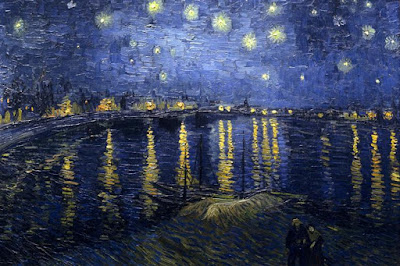Constellations and the Genesis Dispersal
For me, stargazing is a wondrous thing, but I'm not good with constellations. F'rinstance, I don't get seeing Cassiopeia on her throne, just a kind of W shape. That one over there, a scorpion, you say? Not happening for this child, sorry. Odd that I can see figures in clouds but not in constellations. Especially on a clear night, there's all kinds of other stars making it hard to pick out the ones in the constellation. Big dipper (or "plough")? Yes, I can see that. And the little one, too. No, I don't see the Great Bear in it. Oh look, a shooting star!
Those constellations have some mighty fanciful tales associated with them, don't they? What people may not know is that the same basic story is found in diverse areas of the globe, in different cultures. How is that? Getting into the history of constellations, star maps, and the biblical timeline, looks like this may help support the Genesis dispersal.
 |
| Starry Night over the Rhone, Vincent van Gogh, 1888 |
Do you remember as a child looking into the sky to find shapes in cotton-ball clouds? How often did you see the same shape as someone else? For my family, we saw very different animals or objects, and it was only when we specifically pointed out distinct features that we could agree on a shape.To finish reading, click on "Do the Big and Little Dipper Support the Bible’s Timeline?"
Similarly, how likely is it for cultures scattered across the globe to see the same shapes in the stars? Ursa Major and Ursa Minor, the Big and Little Bears with distorted tails, are well-known constellations in today’s world because they are easy to spot, hold the asterisms we know as the Big Dipper and Little Dipper, and are important for finding the North Star. Even though these bears have long tails unlike any bear we know today, they caught the attention of the Ancient World as well.